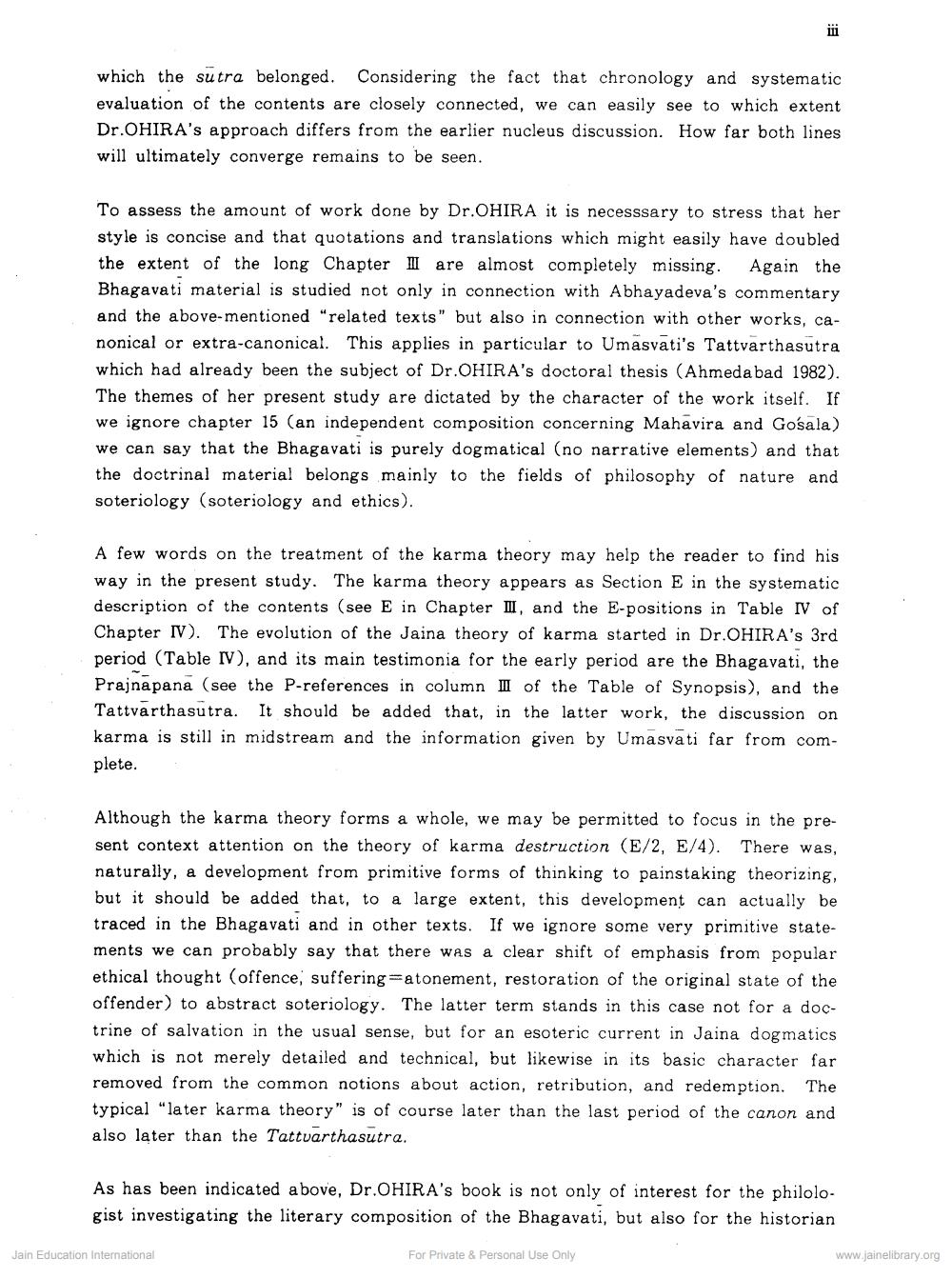________________
which the sutra belonged. Considering the fact that chronology and systematic evaluation of the contents are closely connected, we can easily see to which extent Dr.OHIRA's approach differs from the earlier nucleus discussion. How far both lines will ultimately converge remains to be seen.
To assess the amount of work done by Dr.OHIRA it is necesssary to stress that her style is concise and that quotations and translations which might easily have doubled the extent of the long Chapter II are almost completely missing. Again the Bhagavati material is studied not only in connection with Abhayadeva's commentary and the above-mentioned "related texts" but also in connection with other works, canonical or extra-canonical. This applies in particular to Umasvati's Tattvarthasutra which had already been the subject of Dr.OHIRA's doctoral thesis (Ahmedabad 1982). The themes of her present study are dictated by the character of the work itself. If we ignore chapter 15 (an independent composition concerning Mahavira and Gosala) we can say that the Bhagavati is purely dogmatical (no narrative elements, and that the doctrinal material belongs mainly to the fields of philosophy of nature and soteriology (soteriology and ethics).
A few words on the treatment of the karma theory may help the reader to find his way in the present study. The karma theory appears as Section E in the systematic description of the contents (see E in Chapter II, and the E-positions in Table IV of Chapter IV). The evolution of the Jaina theory of karma started in Dr.OHIRA's 3rd period (Table IV), and its main testimonia for the early period are the Bhagavati, the Prajnapana (see the P-references in column II of the Table of Synopsis), and the Tattvarthasutra. It should be added that, in the latter work, the discussion on karma is still in midstream and the information given by Umasvati far from complete.
Although the karma theory forms a whole, we may be permitted to focus in the present context attention on the theory of karma destruction (E/2, E/4). There was, naturally, a development from primitive forms of thinking to painstaking theorizing, but it should be added that, to a large extent, this development can actually be traced in the Bhagavati and in other texts. If we ignore some very primitive statements we can probably say that there was a clear shift of emphasis from popular ethical thought (offence, suffering=atonement, restoration of the original state of the offender) to abstract soteriology. The latter term stands in this case not for a doctrine of salvation in the usual sense, but for an esoteric current in Jaina dogmatics which is not merely detailed and technical, but likewise in its basic character far removed from the common notions about action, retribution, and redemption. The typical "later karma theory" is of course later than the last period of the canon and also later than the Tattuarthasutra.
As has been indicated above, Dr.OHIRA's book is not only of interest for the philologist investigating the literary composition of the Bhagavati, but also for the historian
Jain Education International
For Private & Personal Use Only
www.jainelibrary.org




